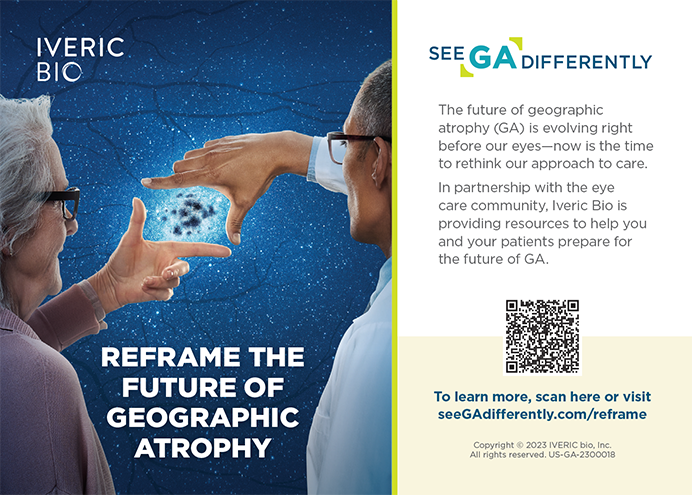One major vision problem faced by society today is the age-related loss of accommodative ability, which leads to presbyopia and a need for spectacle correction at near. Several theories have been proposed regarding the reasons for the loss of accommodation. Some of them invoke a mechanism of crowding around the area of the ciliary body adjacent to the crystalline lens. By this reasoning, incisions along the sclera overlying the ciliary body could potentially expand the space around the ciliary body and might, theoretically, help restore accommodation. Unfortunately, these incisions tend to heal rapidly and close. Several surgeons have attempted to widen them by inserting either expansion segments or other devices that will prevent healing, but there are still limited clinical data on the effectiveness of scleral bands.
My colleagues and I evaluated the ability of an erbium: YAG laser (OptiVision; SurgiLight Inc., Orlando, FL)—not yet FDA approved—to remove tissue and increase the effectiveness of scleral incisions in rabbits. We performed the ablations in a radial manner over the ciliary body. Specifically, we sought to determine the amount of tissue removed, the depth of the incisions created, and the amount of collateral damage caused by the laser. We could not measure refractive changes in a sophisticated manner, so we simply measured the corneal curvature.
METHODOLOGY
First, we conducted a range-finding study in a rabbit model. Using a four-incision RK marker, we performed a peritomy in four quadrants of the conjunctiva of Satin New Zealand pigmented rabbits. We used various tips on the surface of the erbium:YAG laser, as well as different powers, to see if we could achieve consistent ablation. Our aim was to achieve approximately 70% to 75% ablation thickness, such that the dark ciliary body pigment was visible. We began the ablation approximately 0.5 mm posterior to the limbus and extended it over the ciliary body.
For the main study, we used a conical tip and 10 mJ/Hz of power. Control subjects underwent the conjunctival peritomy only. We measured the rabbits' corneal topography preoperatively and at appropriate times postoperatively. Following slit lamp examination, equal groups of rabbits were sacrificed immediately after surgery and at 2 weeks, 6 weeks, and 3 months postoperatively. In addition, we performed complete histopathologic evaluations of the incisions.
RESULTS
Our slit lamp examinations revealed initial injection (slightly lesser in degree in control eyes) of the conjunctiva over the site of the incisions. We found no sign of anterior segment inflammatory changes at any of the postoperative slit lamp examinations, however. Corneal topography showed a progressive flattening of the cornea throughout the course of the study, but it found no difference between study and control eyes.
The histopathologic evaluations showed no untoward inflammatory reaction or widespread tissue damage secondary to laser treatment (Figure 1). We found the effects of the treatment to be strictly localized. The incisions were very narrow and clearly cut, with a depth ranging from 50% to 80%. We noticed a small coagulative change in the adjacent sclera, but we discerned no underlying tissue damage.
At 2 weeks, our histopathologic evaluation showed well-demarcated, fairly wide incisions that were beginning to fill with fibrin and broaden into a “U” or “V” shape. We observed no changes in the adjacent scleral tissue. At 6 weeks postoperatively, the incisions were slightly broader, and we noted the beginning of a fibroblastic response. The adjacent sclera was unremarkable. Our histopathologic evaluation at 3 months postoperatively found well-healed incisions that were completely filled with proliferative fibroblasts and fibrous tissue. This was to be expected, due to the rapid healing response of rabbits. We perceived no underlying tissue changes during this examination.
CONCLUSIONS
All of the incisions created were uncomplicated and did not result in perforations or significant laser damage. Although our slit lamp examinations showed minor conjunctival changes in the treated versus control eyes, we did not find any evidence of anterior segment inflammation. Our analysis revealed no difference in corneal curvature between subject groups. We did not evaluate any changes in refraction during this study. We did not analyze any changes in the ciliary body or the positioning of the lens iris diaphragm, nor did we evaluate the laser treatment's effect on any potential “crowding” in the area of the ciliary body overlying the crystalline lens.
The study demonstrated that the erbium:YAG laser can successfully create well-defined incisions in the sclera overlying the ciliary body without causing noticeable inflammatory changes, anterior segment damage, or collateral damage to the tissue underlying the laser incision. This study did not analyze whether the laser increased the effectiveness of the scleral incisions.
Nick Mamalis, MD, is Professor of Ophthalmology at the Moran Eye Center, University of Utah. Dr. Mamalis holds no financial interest in the product mentioned herein. He may be reached at (801) 581-6586; nick.mamalis@hsc.utah.edu.

